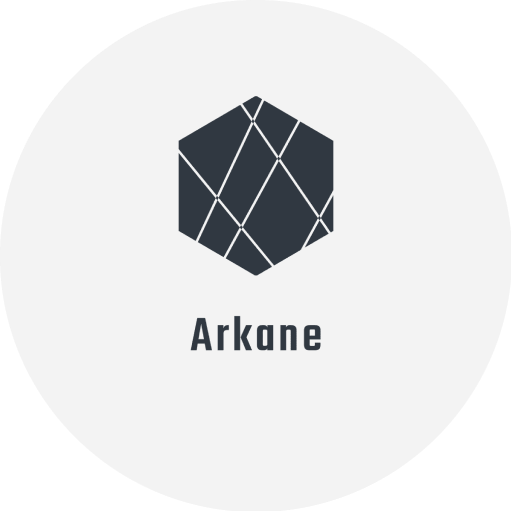
Renting GPUs for Video Editing and Media Production

Introduction to GPU Technology in Video Editing
Graphics Processing Units (GPUs) have become a cornerstone in the realm of video editing, evolving from their initial design as specialized circuits for accelerating computer graphics and image processing. Originally embedded in various devices ranging from video cards to game consoles, GPUs later found utility in non-graphic calculations thanks to their parallel structure, which proved efficient for tasks such as neural network training and cryptocurrency mining.
The journey of GPUs in video editing dates back to the early 1990s. The rise of real-time 3D graphics in games ushered in a public demand for hardware-accelerated 3D graphics. Early mass-market 3D graphics hardware appeared in arcade system boards and fifth-generation video game consoles. Notably, the Sega Model 2 arcade system and the Fujitsu Pinolite, the first 3D geometry processor for personal computers, were pioneers in this domain.
With the emergence of programmable shading, represented by NVIDIA’s GeForce 3, each pixel and geometric vertex could be processed by short programs, enhancing the graphical output significantly. This innovation found its way into consoles like the Xbox, competing with PlayStation 2’s custom vector unit. These developments laid the groundwork for the Unified Shader Model, harmonizing the processing of vertices and pixels.
In recent years, GPUs have experienced significant advancements, transforming into the driving force behind fast video processing and enhanced editing capabilities. The distinction between discrete GPUs, which are separate physical cards with dedicated memory, and integrated GPUs, embedded alongside the CPU and sharing system RAM, highlights the diversity in the GPU landscape.
The processing power of a GPU, typically measured in GFLOPS or TFLOPS, is crucial in determining its efficiency in video editing. The GPU’s cores’ ability to execute operations with single-precision floating point numbers significantly impacts its performance.
GPU memory (VRAM) is another critical factor. The amount of data a GPU can store and access in its VRAM directly influences its calculation capabilities. Moreover, GPU memory bandwidth, the speed at which VRAM operates, is essential for efficient data transfer to and from GPU cores, especially for applications like noise reduction in video editing.
Additionally, the connection speed between the GPU and CPU is vital, with discrete GPUs relying on connections like the PCIe bus or Thunderbolt for data transfer, contrasting with the direct access enjoyed by integrated GPUs.
Lastly, the evolution of GPU cache memory, particularly L1, L2, and L3 caches, has significantly improved data access speed for GPU cores. These caches, organized hierarchically, play a crucial role in reducing memory latency and enhancing overall GPU performance.
Key Advantages of GPUs in Video Editing
The evolution of GPU technology has brought forth significant advantages in video editing, revolutionizing the way editors approach their craft. The following are key benefits of utilizing GPUs in video editing:
- Real-Time Playback: One of the most notable advantages of a robust GPU is the ability to facilitate smooth video playback without lag. This capability allows editors to preview changes in real-time, significantly improving the editing experience and reducing the time spent on revisions.
- Effects and Filters: GPUs play a monumental role in applying video effects. They are capable of handling everything from basic color correction to complex tasks like 3D rendering in real-time. This not only enhances the quality of the videos but also allows editors to experiment with various effects without compromising on speed or efficiency.
- Encoding and Exporting: A powerful GPU can significantly speed up the video transcoding process, enabling faster conversion of video files from one format to another. This aspect is particularly beneficial for editors who work with multiple video formats, as it streamlines the workflow and reduces waiting times during the exporting phase.
- Handling High Resolution Footage: As the industry shifts towards higher resolution formats like 4K and 8K, the importance of having a potent GPU becomes more pronounced. GPUs with high processing power and ample VRAM capacity are indispensable for real-time editing of large video files, ensuring a smooth and lag-free workflow even with high pixel counts.
- Quick Rendering of Edits: GPUs are crucial in rendering edits into the final video file swiftly. By handling complex calculations efficiently, particularly in effects and color grading, they save time and enhance productivity. This rapid rendering capability is essential for maintaining a fluid and efficient editing process.
- Creative Freedom: The real-time application of effects and filters offered by strong GPUs provides editors with greater creative freedom. This capability enables smooth addition and modification of effects, expanding the creative options and allowing for a richer output. This expansion in creative possibilities is a significant advantage for editors aiming to produce unique and high-quality content.
In conclusion, the role of GPUs in video editing has transformed from being a mere support tool to a central component driving efficiency, creativity, and quality in the video editing process. Their continued evolution promises even more significant enhancements in video editing capabilities in the future.
The Rising Demand for GPU Power in Media Production
The relentless progression of technology has seen the Graphic Processor Unit (GPU) market soar, anticipated to expand at a Compound Annual Growth Rate (CAGR) of 33.5% from 2022 to 2030. This remarkable growth is primarily driven by the escalating demand for advanced graphics and high-quality visual experiences across various sectors, including gaming, entertainment, and data centers. The surge in virtual and augmented reality applications, coupled with breakthroughs in AI and machine learning, further fuels this demand, underlining the GPU’s critical role in these innovative technologies.
GPUs, originally designed for image rendering and animations, have evolved into potent tools for complex computations in video editing, outpacing traditional CPUs in performance. This efficiency is not only beneficial for high-end computational tasks but also translates into significant cost savings on hardware and electricity, making GPUs a preferred choice for power-intensive operations.
The expansion of the gaming market into new platforms, such as mobile and cloud gaming, has played a pivotal role in the increased demand for GPUs. This trend is supported by the need for high-performance graphics rendering and cross-platform gaming compatibility. The emergence of new business models like cloud gaming and game streaming presents fresh opportunities for GPU companies, leading to continuous advancements and improvements in GPU technology. Notable developments include enhanced performance, improved energy efficiency, and support for cutting-edge technologies like AI-based rendering and real-time ray tracing.
In 2021, the dedicated GPU segment, featuring products from leading companies like NVIDIA, AMD, and Intel, dominated the market. These dedicated GPUs are designed to cater to the specific needs of consumers, including video and image rendering and immersive gaming experiences. The adoption of dedicated GPUs in gaming laptops and desktops has significantly contributed to the market’s growth, with products like NVIDIA GeForce RTX series and AMD Radeon being prime examples.
The electronics industry has been a major contributor to the GPU market’s growth, with tablets and laptops equipped with dedicated GPUs enhancing graphics and video playback performance. The rising adoption of gaming consoles such as Xbox and PlayStation has further bolstered the demand for GPUs, underscoring their importance in delivering high-quality graphics and smooth gameplay.
In conclusion, the GPU market’s unprecedented growth trajectory is a testament to its indispensable role in modern media production, where high performance, advanced graphics, and energy efficiency are paramount.
The Case for Renting GPUs
The evolving landscape of GPU technology presents a compelling case for renting GPUs, especially for video editing and media production tasks. The benefits of GPU rental over outright purchase are multi-faceted and align with the dynamic needs of today’s technology landscape.
- Cost Advantages: The high cost of GPUs, ranging from a few hundred to thousands of dollars, makes their outright purchase a significant investment. Renting a GPU circumvents this financial burden, offering a more cost-effective solution. Additionally, GPUs depreciate in value over time, making rental a more financially sound decision in the long run.
- Flexible Infrastructure Needs: Renting GPUs provides the flexibility to access high-performance hardware for short-term projects without the long-term commitment of a purchase. This flexibility is ideal for testing different GPUs to find the one that best suits a specific project’s needs. Moreover, cloud GPU providers often offer additional features like easy data transfer and remote access, enhancing the overall utility and convenience.
- Access to Powerful Hardware at Lower Costs: Renting allows users to access more powerful GPUs than they might be able to afford if purchasing outright. This includes GPUs with unique characteristics, like special processor configurations or multiple cards in one system, which may not be readily available for purchase. Rental also enables users to keep pace with the latest technology trends without the need to sell old hardware.
- Minimizing Upfront Costs: The upfront costs associated with purchasing GPU hardware, along with ongoing expenses like maintenance, depreciation, and energy consumption, are significantly reduced when renting. This makes renting a more economical choice, especially for those involved in intensive tasks such as deep learning, movie editing, and gaming applications.
- Staying Relevant with Technology: The rapid pace of technological advancement in the GPU sector means that new and improved models are continually emerging. Renting GPUs ensures access to the latest technology without the hassle of maintenance, upgrades, and handling new product launches. This approach future-proofs systems and saves time on research and product evaluation, offering a hassle-free solution to staying on the cutting edge of technology.
In conclusion, renting GPUs presents a compelling option for those requiring high-performance computing for video editing and media production, offering cost-effectiveness, flexibility, and access to the latest technology without the financial and logistical burdens of ownership.
How Arkane Cloud Facilitates GPU Rental for Video Editing
Arkane Cloud’s GPU server solutions stand at the forefront of cloud computing advancements, catering specifically to the evolving needs of video editing and media production. This section explores how Arkane Cloud harnesses the power of GPU technology to provide an efficient, flexible, and cost-effective platform for video editing tasks.
- Specialized GPU Servers for Video Editing: Arkane Cloud offers specialized GPU servers that are optimized for complex computational tasks such as video editing, 3D modeling, and rendering. These servers are equipped with high-performance GPUs that enable rapid execution of mathematical operations, a necessity for AI algorithms and intricate video editing processes. The capability to rent GPU servers with pre-installed frameworks or install customized ones makes Arkane Cloud a versatile choice for a broad range of video editing requirements.
- Parallel Processing for Enhanced Performance: The GPU servers provided by Arkane Cloud leverage the power of parallel processing, a hallmark of modern GPU technology. These servers consist of thousands of small cores optimized for simultaneous execution of multiple tasks, thereby processing large volumes of video data more efficiently than traditional CPU-based servers. This parallelism is critical for handling the intricate math involved in video editing tasks, from basic edits to complex visual effects and color grading.
- Cost-Effective and Flexible Solutions: Understanding the financial constraints of video editing projects, Arkane Cloud offers cost-effective and flexible GPU server solutions. Clients can rent high-performance GPU hardware at competitive prices without the burden of long-term commitments. This flexibility is ideal for projects of varying scales and durations, from short-term edits to extensive media productions. Moreover, the ability to scale configurations up or down based on project needs adds to the economic and operational efficiency of using Arkane Cloud’s services.
- Broad Range of Applications: Arkane Cloud’s GPU servers are not only suitable for video editing but also for a variety of compute-intensive applications. These include machine learning and deep learning, data analytics, high-performance computing (HPC), and virtual reality (VR) applications. By providing GPU servers that cater to these diverse needs, Arkane Cloud ensures that clients have access to a robust infrastructure capable of handling a wide array of computational challenges.
- High-bandwidth Internet Connectivity and Data Center Reliability: Arkane Cloud’s GPU servers are hosted in TIER III Data Centers, ensuring top reliability and security with high uptime rates. Additionally, the service includes high-bandwidth internet connectivity, allowing for quick transfer of large datasets, which is crucial in video editing workflows where large files are the norm. This combination of reliable data center operations and high-speed connectivity ensures that video editing projects run smoothly and efficiently.
In summary, Arkane Cloud’s GPU server solutions offer a comprehensive package for video editing and media production, combining specialized hardware, parallel processing capabilities, cost-efficiency, flexibility, and a broad range of applications with reliable data center infrastructure and high-speed internet connectivity.
Newsletter
You Do Not Want to Miss Out!
Step into the Future of Model Deployment. Join Us and Stay Ahead of the Curve!

![The 4 Major Corporate Fears About AI [and How Arkane Crushes Them]](https://arkanecloud.com/wp-content/uploads/elementor/thumbs/image-fears-r83x02fmwkg0873grkx2f5jvdsy2k1b00h5jqz1vi0.png)



